Tom
To the best of my knowledge, Addington was originally meant to start on the current 5th with the house on the hill. Thinking on where #18 is located, it makes sense for viewing play from the house. I don't know why the original plan wasn't carried out.
Tommy Mac
The club website claims Braid was involved with the design.
I wonder if Sam King didn't caddie for Bernardo?
Craig D
The first AND second are fine holes. Using the land for a par 5 would be a slog of over 500 yards uphill - not good.
KNOLE PARK TOUR CONTINUEDThe 7th legs around the estate, not a bad par 5, but I think it would make a better par 4. The 8th is an attractive par 3 with a very small green and water tucked down the left.
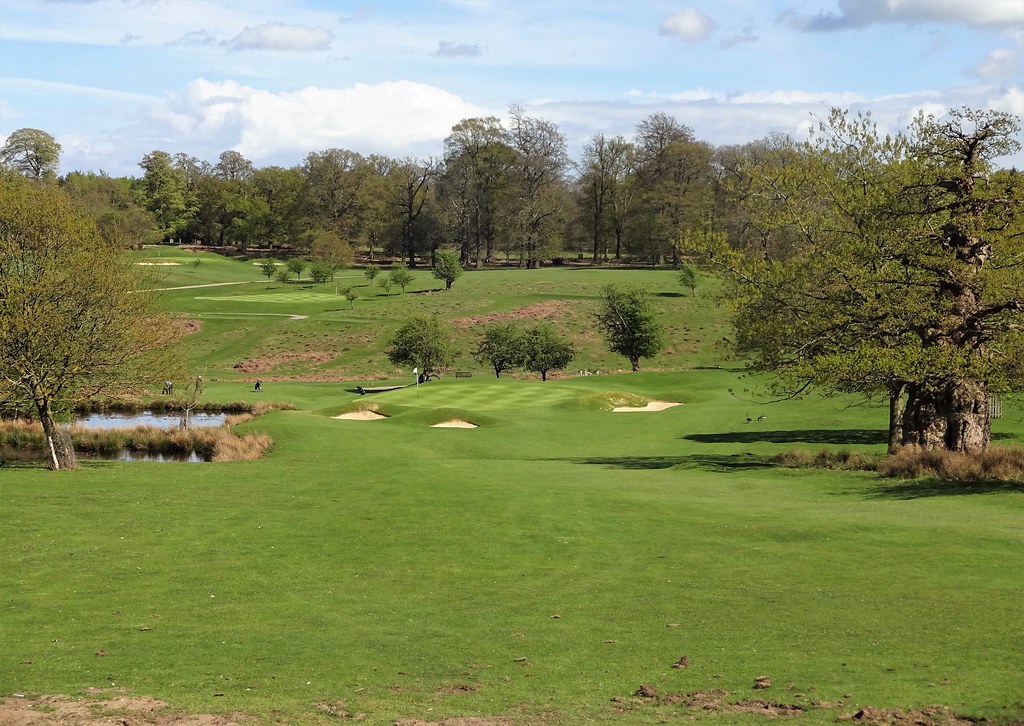
The ho-hum golf continues for 9, 10 & 11. Although the 10th recently had a bunker renovation which is meant to match the original design.
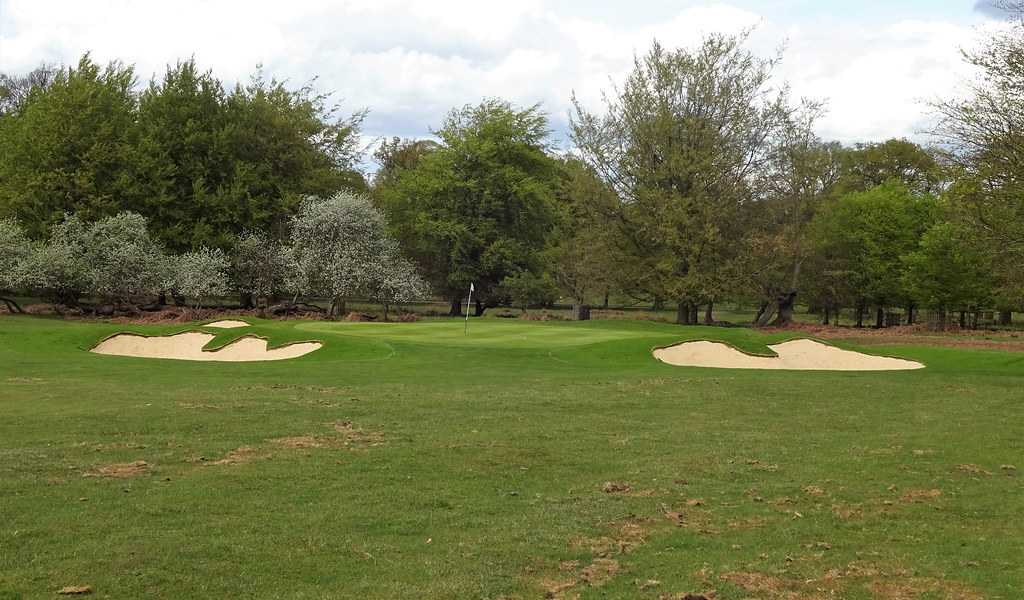
The 11th is very odd for its short turning angle - it somehow doesn't fit with the rest of the course. Luckily, Knole Park hits another purple patch starting on the cracking 12th. Indeed, the three hole stretch starting here is probably the best of the course. Playing all of its 200ish yards, #12 is a very attractive hole with a remarkable ridge cutting unevenly through the green.
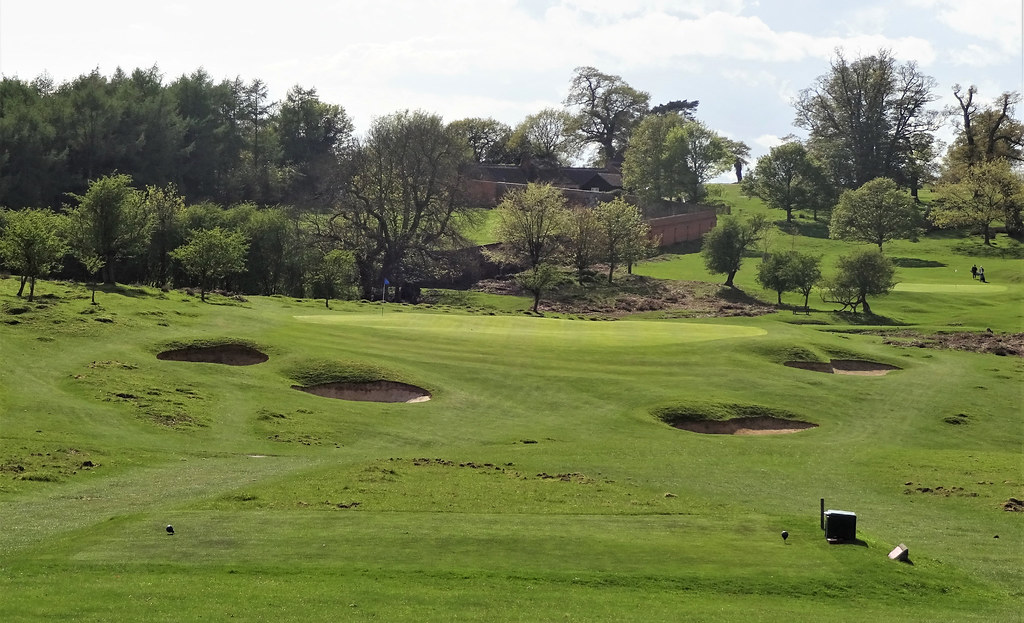
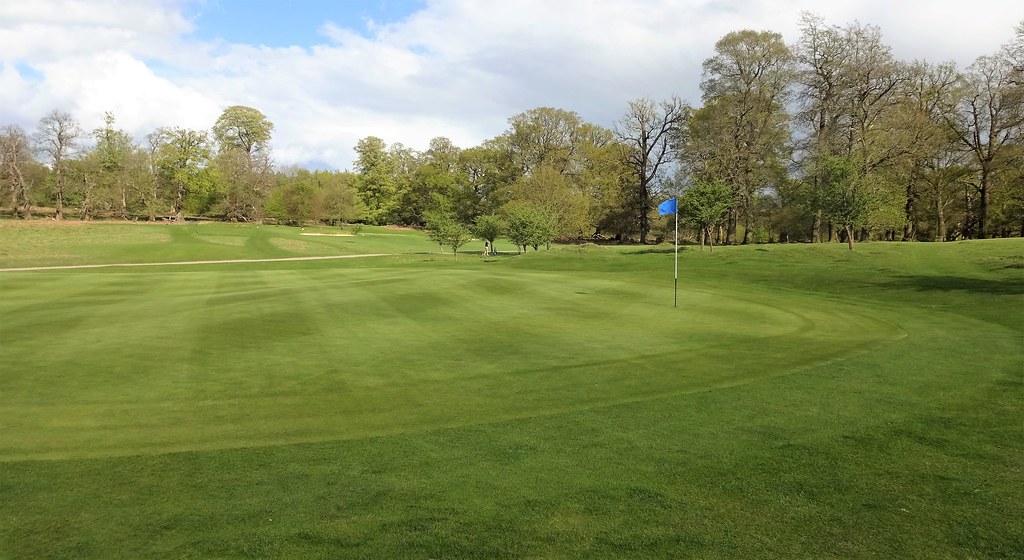
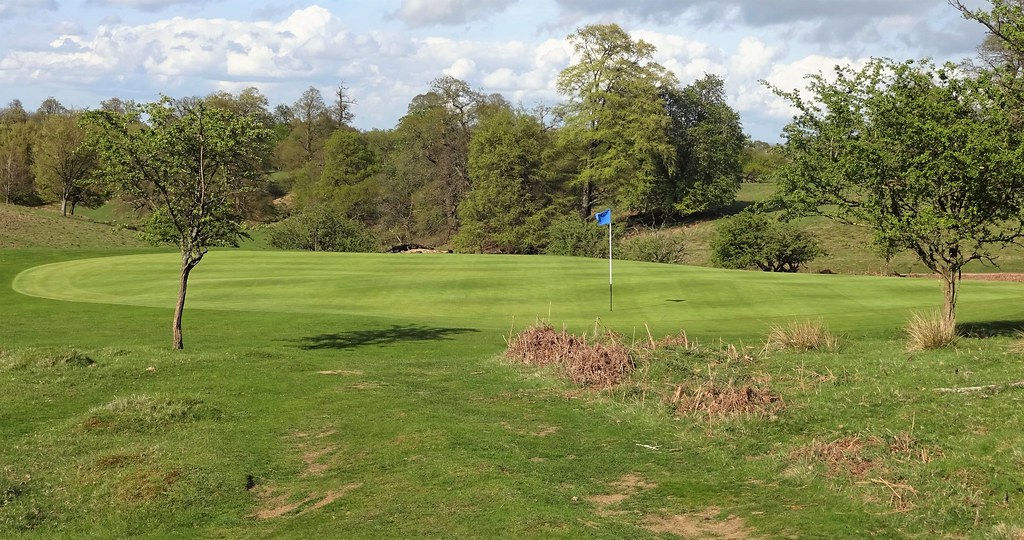
A drivable par 4, 13 offers three distinct choices off the tee, but none are particularly enticing - just the sort of thing a great short 4 needs to be.
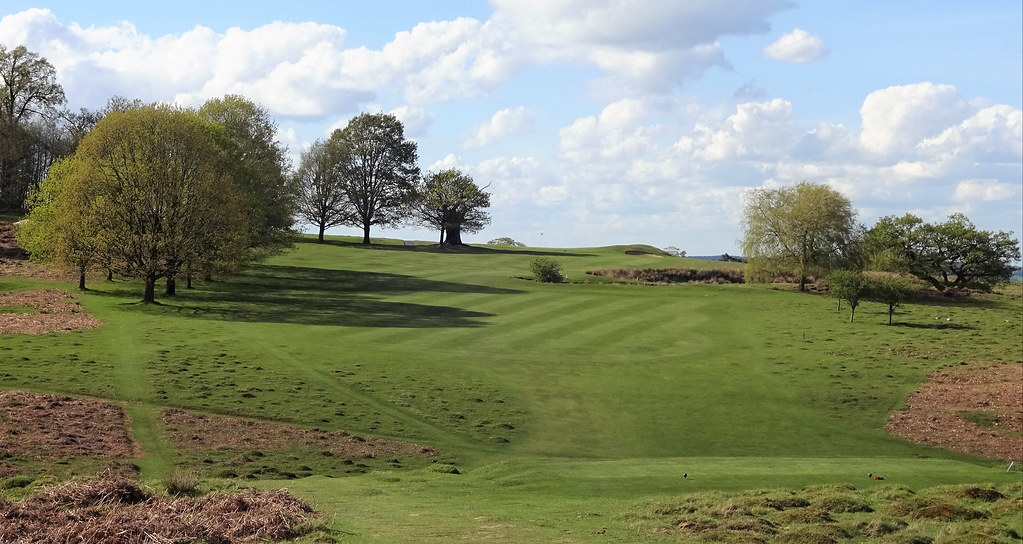

The killer stretch continues with a monster par 4 bending strongly to the right along the oob line. The magnificence of the property is easily appreciated from this fairway.
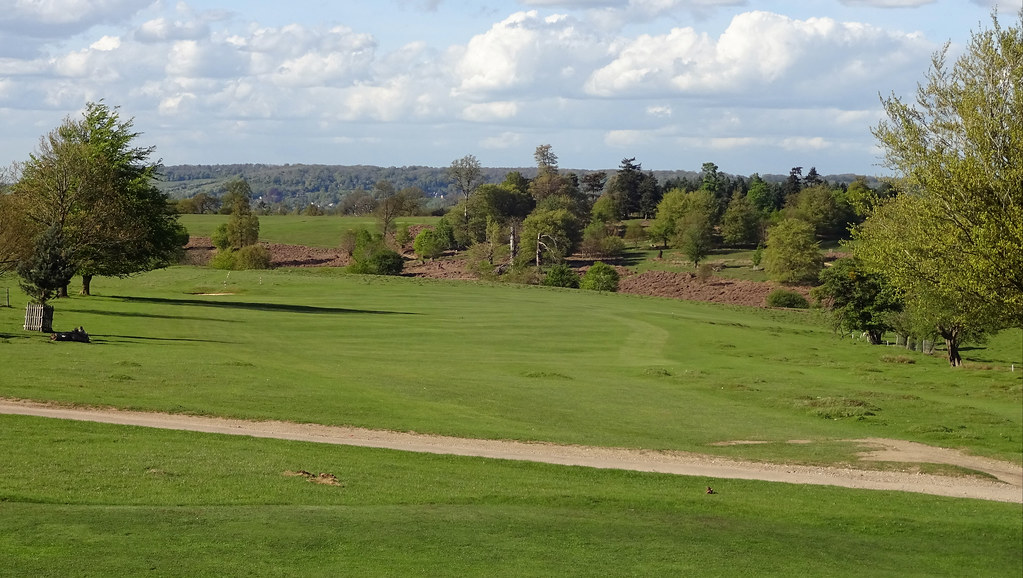
The course has been tidied up since my last visit. There used to be a track just shy of the green which needed to be carried and is now grassed over.

#15, a crazy par 5 rising to a green seemingly miles above the floor of the fairway, exposes the site for its severity. This sort of hole is great for flat bellies. Although, the hole is much better now without rough on the severe upslope.
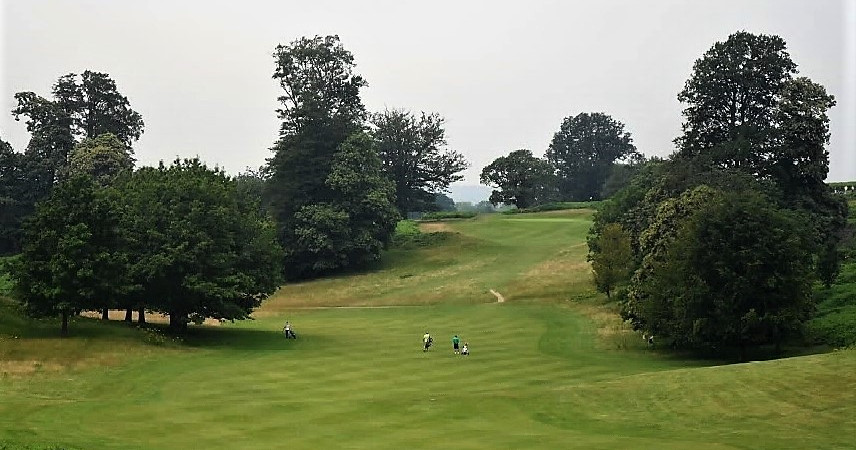
Before & after.

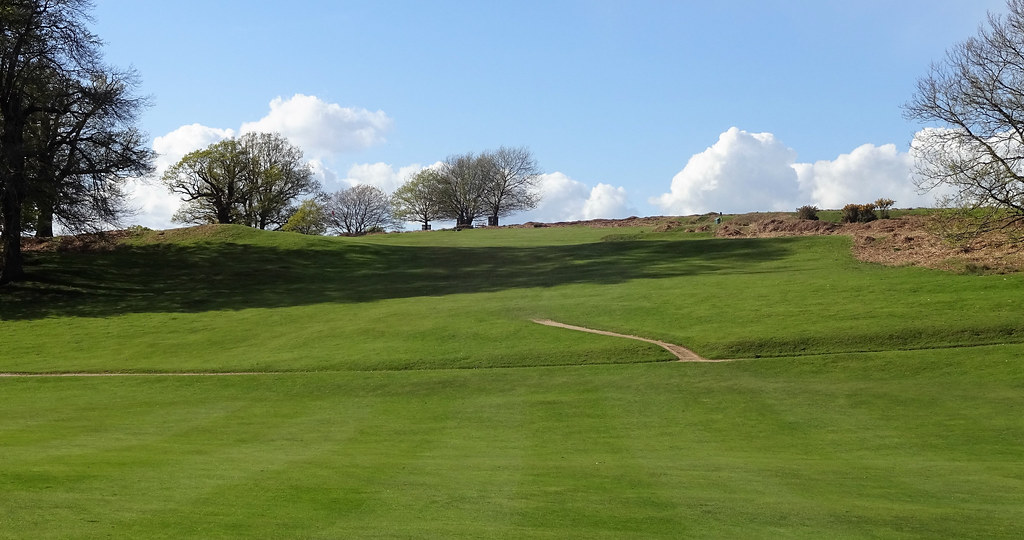
There is a bit of a plateau 40 yards short of the putting surface which will catch out many a golfer because I think this is the location of the original green.

A look back down the fairway. Around the turn and on parts of the back nine Knole Park's terrain is very reminscent of Cleeve Cloud, but with trees. The turf suggests Knole Park is heathland, but there is a definite downland feel to the site despite the trees.
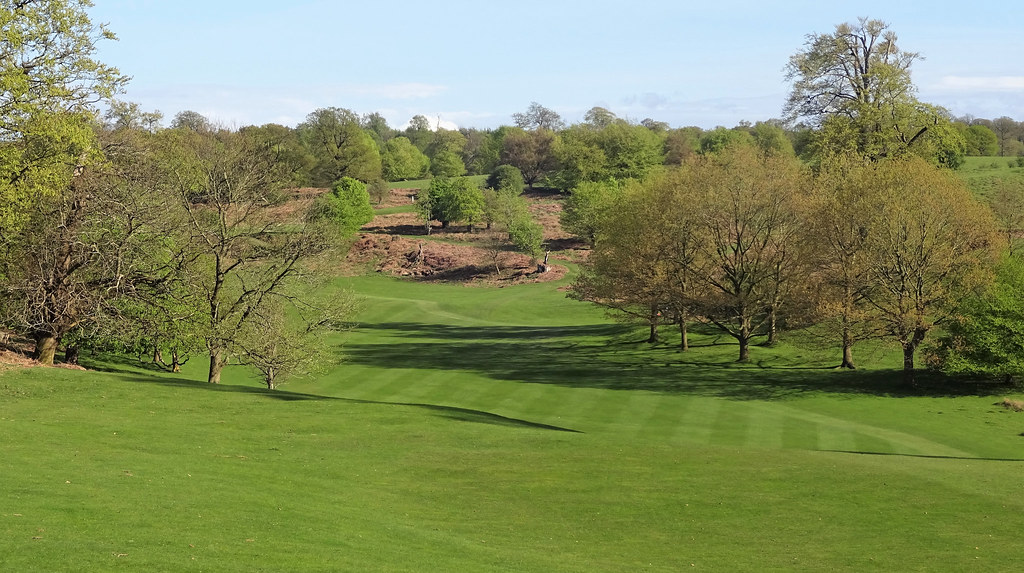
The final par 3 rounds off a good set even if it is a take on the front nine's uphill one-shotters, but then I am a big fan of uphill par 3s.
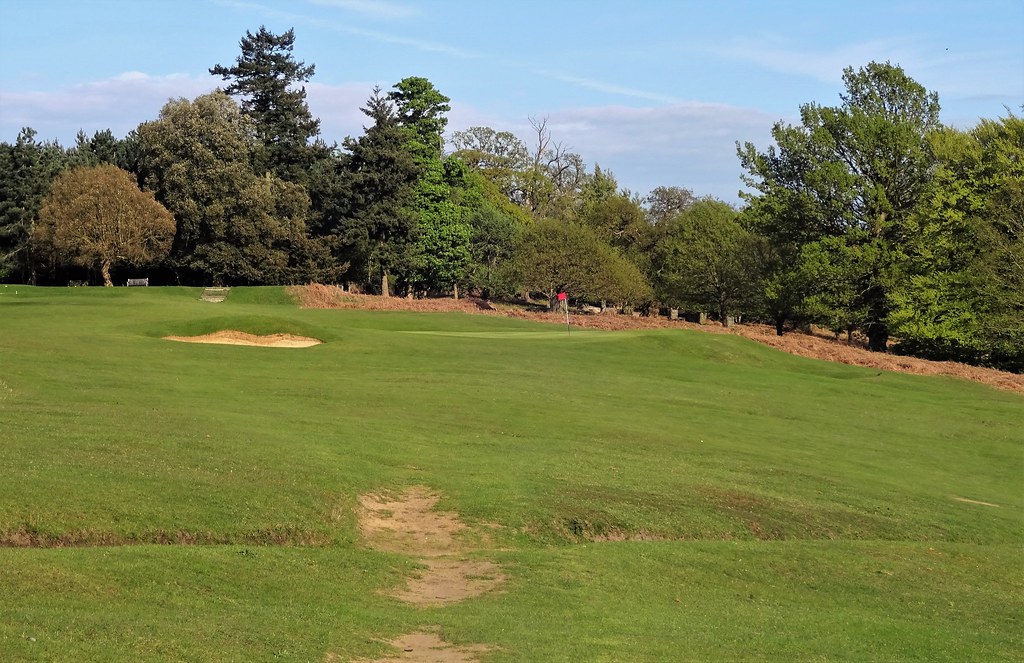
The course is certainly fizzling out at this point, but the 17th is a good if unspectacular par 5. The one spectacular aspect of the hole is a large slit in the middle of the fairway which I believe is meant to be a bunker. The home hole puts water dead in play.

Thus ends Knole Park, a very fine course meandering over an outstanding site. It is said the estate lost 70% of trees during the Great Storm. Perhaps this tragedy uncovered outstanding vistas to be had throughout the park. I would like to see photos of the course/park just prior to the storm. I must say the course wasn't firing on all cylinders, but it is easy to see how much more difficult some of the sloping greens would be if the course were keen. Despite some prosaic holes, there are enough lovely examples wonderfully dispersed to keep the golfer engaged for most of the round. One other positive aspect is Knole Park is of its place. One cannot imagine this course would exist anywhere but England. However, I can't help thinking the club would do well to restore something close to the original bunker scheme as the current configuration doesn't add much to the design. As it is, the course is still worth a good detour especially if one can take in Knole House as well.
A special thank you to Craig for introducing me to Knole Park and indulging my fancy with a game. Also, Chappers deserves a pat on the back for keeping Knole Park at the forefront of my thoughts when an opportunity to travel to the southeast arose. 2018
Ciao